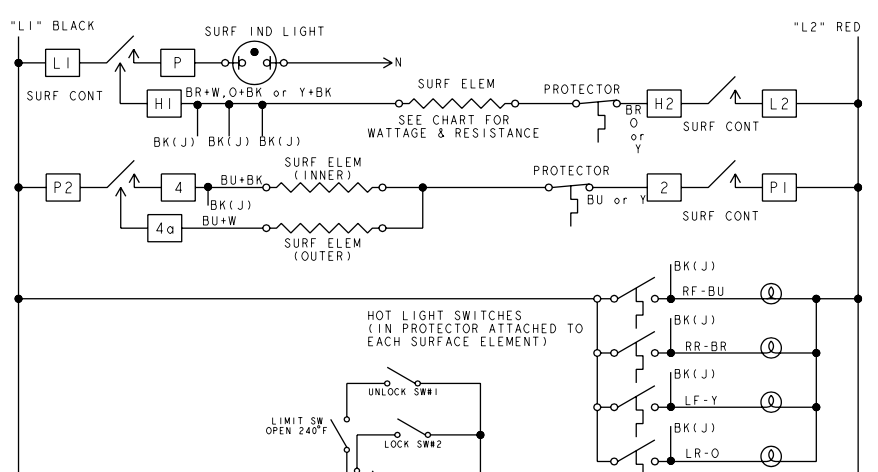Forum Replies Created
-
AuthorPosts
-
Hi Ruslan,
The reason you know you are missing half the voltage is that you have zero voltage drop across the heater. No current is flowing through it, no work is being done.
This means that one of the lines is open, and the 120vac you are measuring from each side of the heater wrt N is coming from the same source – either L1 or L2.
This is like the last question we asked you on the Midterm exam.
So, the correct answer would be #2 above.
Does that make sense?
Now I’m wondering if Neutral is not switched for the ignitors?
You are wondering correctly!
I said:
See if you’re getting 120 vac from P20-2 to P21-1 on the electronic relay board with both bake and broil turned on.You can’t turn bake and broil on at the same time, for one thing.
You’ll probably need to see the answer choices again to figure this one out. Do you want me to go ahead and reset the quiz for you?
No – it’s washing clothes that are too clean. That has a similar effect as using too much detergent, since there isn’t the dirt, etc. on the clothing to react with the detergent.
Hi Joe,
I reset you! Heckuva week for me, too 😀
🙂
Two of those answers are correct, including your first choice of “no heating”. What is your best guess as to the second one?
that’s correct!
As for the switches, I’ll have to bring in some more expertise on this and get back to you.
and also tell me which switch you are asking about

Okay, let’s see if you can figure out the correct answer to #2 on the Unit 4 quiz.
Here are the possible answer choices. Two of them are correct:
Through H2 to L2 in the infinite switch
Through the surface element
Through the light’s bimetal switch
Through L1 to H1 in the infinite switch
It’s hardwired into L1
Through the protector bimetalGreat!
I’d say that choice is up to you – we don’t have a strong recommendation. In fact, these are two that you could even do simultaneously, if you felt like it, as they are very different.
Advanced Troubleshooting will give you more schematic practice.
W&D will give you a deep dive into the technology found in washers and dryers.
Hi Don,
First of all, are you going to retake the Unit 2 quiz?
I always like to make sure students are looking at the correct light, since there is another one on the schematic that is labeled similarly.
Be sure you are looking at the LF Hot Indicator Light
In unit 4, Question 2, there are two correct answers out of the choices given – we want you to select both.
After I’m sure we’re looking at the same thing, I’ll try to help you with what you’re asking about the switch.
Yes!
So, now you can think about power. One of the equations of power is P = I x E.
To use that in this scenario, I is the circuit current, but what number we use for E requires more thinking about.
If we use the source voltage, then we’ll calculate the heat generated by the entire circuit.
But if we only want to know the heat generated by one of the loads, we’d have to use the voltage drop for that load.
This tells us that the load with the higher resistance will generate more heat (power).
Getting back to Questions 7 and 8 on the quiz.
To use P = I x E, you’d have to calculate voltage drop across each load as well as the circuit current. Those are both doable, but there’s a little more straightforward way.
We showed you how to do it in a video back in unit 3, where there was a loose connection in series with an element. It’s a very similar scenario to this one. Rewatch how we did the calculations and see if you can follow it. Let me know if you have any questions about it, and if it helps you to see what to do on these questions.
Correct.
The total resistance of the circuit (in this case, 5 + 32) will determine what that current is.
So, each load has the same current flowing through it.
Now, before we get back to power, what about voltage drop in these two loads?
As we taught you, when current goes through a resistance (a load), it will create a voltage drop across the load. The voltage drop will be proportional to the resistance (V = I x R) And the sum of the two voltage drops will equal the source voltage.
Which of the two loads will have a higher voltage drop?
Okay – now we’re onto something.
In a series circuit, is the current the same throughout the circuit, or does it change at different points in the circuit?
(We covered this in unit 5)
You got it!
-
AuthorPosts